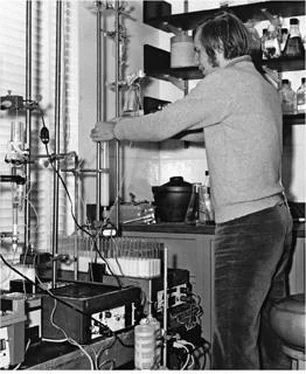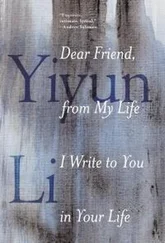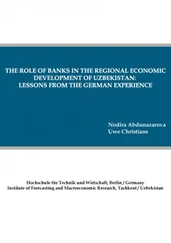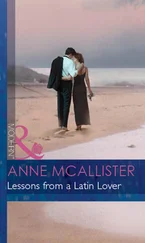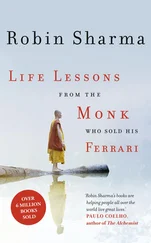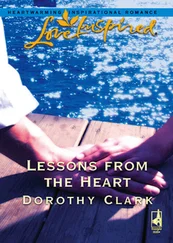James Watson - AVOID BORING PEOPLE - Lessons from a Life in Science
Здесь есть возможность читать онлайн «James Watson - AVOID BORING PEOPLE - Lessons from a Life in Science» весь текст электронной книги совершенно бесплатно (целиком полную версию без сокращений). В некоторых случаях можно слушать аудио, скачать через торрент в формате fb2 и присутствует краткое содержание. Жанр: Биографии и Мемуары. Описание произведения, (предисловие) а так же отзывы посетителей доступны на портале библиотеки ЛибКат.
- Название:AVOID BORING PEOPLE: Lessons from a Life in Science
- Автор:
- Жанр:
- Год:неизвестен
- ISBN:нет данных
- Рейтинг книги:5 / 5. Голосов: 1
-
Избранное:Добавить в избранное
- Отзывы:
-
Ваша оценка:
- 100
- 1
- 2
- 3
- 4
- 5
AVOID BORING PEOPLE: Lessons from a Life in Science: краткое содержание, описание и аннотация
Предлагаем к чтению аннотацию, описание, краткое содержание или предисловие (зависит от того, что написал сам автор книги «AVOID BORING PEOPLE: Lessons from a Life in Science»). Если вы не нашли необходимую информацию о книге — напишите в комментариях, мы постараемся отыскать её.
AVOID BORING PEOPLE: Lessons from a Life in Science — читать онлайн бесплатно полную книгу (весь текст) целиком
Ниже представлен текст книги, разбитый по страницам. Система сохранения места последней прочитанной страницы, позволяет с удобством читать онлайн бесплатно книгу «AVOID BORING PEOPLE: Lessons from a Life in Science», без необходимости каждый раз заново искать на чём Вы остановились. Поставьте закладку, и сможете в любой момент перейти на страницу, на которой закончили чтение.
Интервал:
Закладка:
Course notes for Biology 2, Lecture 1: “What Is Life”
That term Francis Crick was at Harvard as a visiting professor of chemistry. Even now, six years after the double helix had been found, Cambridge University had yet to provide him and his new South African-born collaborator, the prodigiously clever experimentalist Sydney Brenner, decent research space. Their experiments were being done in a wartime hut erected next to the Austin wing of Cavendish Lab, where the DNA base pairs had come together. The Harvard Chemistry Department, always wanting the best, had just offered Francis a professorship, but without much expectation of his acceptance. Here they were right, as Francis soon got news that the Medical Research Council would provide funds for the construction of a new laboratory building expressly for molecular biology. In fine intellectual fettle because his long-ignored adaptor hypothesis was now a widely accepted fact, Francis conversed endlessly on the details of how specific amino acids first become attached to their respective tRNA molecules. When he and I were awarded the Warren Triennial Prize at Massachusetts General Hospital, my talk surely was much less convincing than his, as I took the opportunity to propose my as yet unproven theory that the essence of DNA tumor viruses was their possession of genes that initiated DNA synthesis.Ribosomal particles were proving much more structurally complicated than we anticipated, and Alfred Tissières persuaded the Welsh protein chemist Ieuan Harris to come over temporarily from Cambridge to help us. We initially had thought the particles would have the molecular simplicity of small plant viruses. But from his first amino end group analysis, Ieuan saw that ribosomes contained many more proteins than he could effectively cope with using current separation methodologies. So he took solace for the remainder of the spring in sampling American beers still new to him.
My lab group's size was steadily expanding despite the unwanted fleeing of my first graduate student, Bob Risebrough, to sea on the Woods Hole oceanographic sailing boat Atlantis. Much more content at their first contacts with molecular biology were two new graduate students, David Schlessinger and Charles Kurland. After working with Alfred to more firmly establish the two-subunit composition of ribosomes, David briefly went to Caltech to see if Matt Meselson's CsCi
banding technique would reveal how long these subunits stayed together during multiple rounds of protein synthesis. That he came back empty-handed reflected his finding that even the ribosomal sub-units are unstable in high levels of CsCi. But the visit was far from a total loss: at Caltech David met the girl that he would later marry. He also discovered David Zipser, a very disenchanted first-year graduate student eager for a fresh chance at happiness at Harvard.Chuck Kurland's first results on ribosomal structure were not at all what I expected. He found single RNA chains in each ribosomal sub-unit, with those present in the larger subunit twice the length of those in the smaller subunits. Before his observations we had anticipated a variety of RNA chain lengths, reflecting their respective functions to convey information for different-sized polypeptide chains. A year later, Matt Meselson and Rick Davern discovered that once made, these ribosomal RNA chains were very stable under optimal conditions for protein synthesis. Yet at the time of our discoveries, Francois Jacob, Jacques Monod, and Arthur Pardee at the Institut Pasteur in Paris had evidence that the RNA templates for so-called induced enzymes had fleeting lives of only a few minutes. This apparent contradiction came to a head at a Copenhagen meeting in the late summer of 1959, at which Jacques Monod questioned the view that RNA had to be the template for all protein synthesis. Could, in fact, DNA molecules be the templates for the synthesis of the so-called induced enzymes? I rejected this hypothesis during my terse report of our ribo-some discoveries. Unfortunately, my talk's only lively moment came at its start, and not from its content. Everyone in the front row brought out a copy of the New York Times to read—a brainchild of Sydney Brenner, who had long noticed with envy my ability to follow talks while simultaneously keeping abreast of daily events.
Earlier in the summer the Japanese biochemist Masayasu Nomura, then a postdoc in Sol Spiegelman's Urbana lab, came briefly to my lab on his way to the 1959 phage course at Cold Spring Harbor. He had spent the previous summer with me and Alfred characterizing abnormal ribosomes made under conditions of chloromycetin inhibition of protein synthesis. Now a year later and still unable to judge their biological significance, I suggested to Masayasu that he use his forthcoming
phage course experience to look at the molecular form of the unstable RNA made during T2 infection. I had been long attracted to T2 RNA because its base composition was almost identical to that of the T2 phage DNA and possibly represented RNA copies of the information present in T2 DNA genes. Though potentially very important, the phenomenon eluded further characterization. What T2 RNA was should at last be revealed by the new techniques of sucrose gradient centrifugation, which required only small amounts of RNA and would potentially provide information about its function through measurements of the sedimentation rate of its radioactively labeled molecules.We were greatly benefiting from David Zipser's transfer from Cal-tech. From the moment he arrived, David, soon to be called Zip, homed in on the sucrose gradient centrifugation procedure that had been recently developed at the Carnegie Institution of Washington biophysics lab. He was an indisputable asset, but a period of some acquaintance revealed that Zip's unhappiness at Caltech may have had a basis in his character: he did not play well with others. After a particularly inappropriate remark about another student's girlfriend, Zip was put on social probation: I told him to stay away from our afternoon tea and cookie sessions, a ban maintained for much of the year. Tellingly, no one came to his defense. His cause was not later helped by his cheering when Gary Powers's U2 was shot down in May 1960 and Eisenhower had to cancel his visit to Moscow later that month. Zip was the product of a New York communist family, fully aware that an easing of tensions between the United States and the USSR would give the family less purpose.
Everyone in the Biolabs was also now benefiting from the insect physiologist Carroll Williams's becoming the new chairman of biology. In July 1959, he got money from University Hall to repaint the corridor of the Biolabs, using bright shades of red, yellow, and blue at focal points. Much more important, McGeorge Bundy told Carroll that he wanted the Biology Department to propose five names for consideration by a super ad hoc committee to be formed in midwinter. Our department's failure over the past year to attract a distinguished geneticist had made Bundy realize that he would have to take the bull by the horns if he indeed wanted to force our Biology Department
into the modern age. Not all the appointments were to be molecular biologists, but each should represent a significant advance over the past.More a conciliator than I might have hoped, Carroll wanted the five candidates to have the department's unanimous backing. My elation at Bundy's proposal was tempered when I saw the department was soon to make offers to the animal and plant embryologists Aaron Moscona and John Torrey As I believed embryology would remain an antiquarian pursuit until revived by better understanding of how DNA expression is controlled, I feared these offers would amount to two more nonwinners. More hope lay in the department's wish to hire an electron microscopist who could teach a modern cell biology course, and I was happy that they decided to try to pinch the spirited Keith Porter from Rockefeller University. For someone to teach modern microbiology, there seemed no one better than Mel Cohn at Stanford, a former protege of Jacques Monod in Paris. Best of all, there was universal enthusiasm for trying to get Matt Meselson to defect from Caltech. Earlier Matt had mesmerized the department with a lecture on how his experiments with Frank Stahl demonstrated the semicon-servative replication of DNA.
Читать дальшеИнтервал:
Закладка:
Похожие книги на «AVOID BORING PEOPLE: Lessons from a Life in Science»
Представляем Вашему вниманию похожие книги на «AVOID BORING PEOPLE: Lessons from a Life in Science» списком для выбора. Мы отобрали схожую по названию и смыслу литературу в надежде предоставить читателям больше вариантов отыскать новые, интересные, ещё непрочитанные произведения.
Обсуждение, отзывы о книге «AVOID BORING PEOPLE: Lessons from a Life in Science» и просто собственные мнения читателей. Оставьте ваши комментарии, напишите, что Вы думаете о произведении, его смысле или главных героях. Укажите что конкретно понравилось, а что нет, и почему Вы так считаете.
